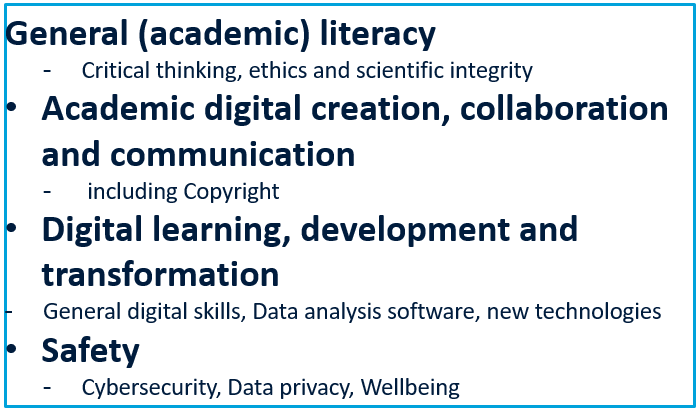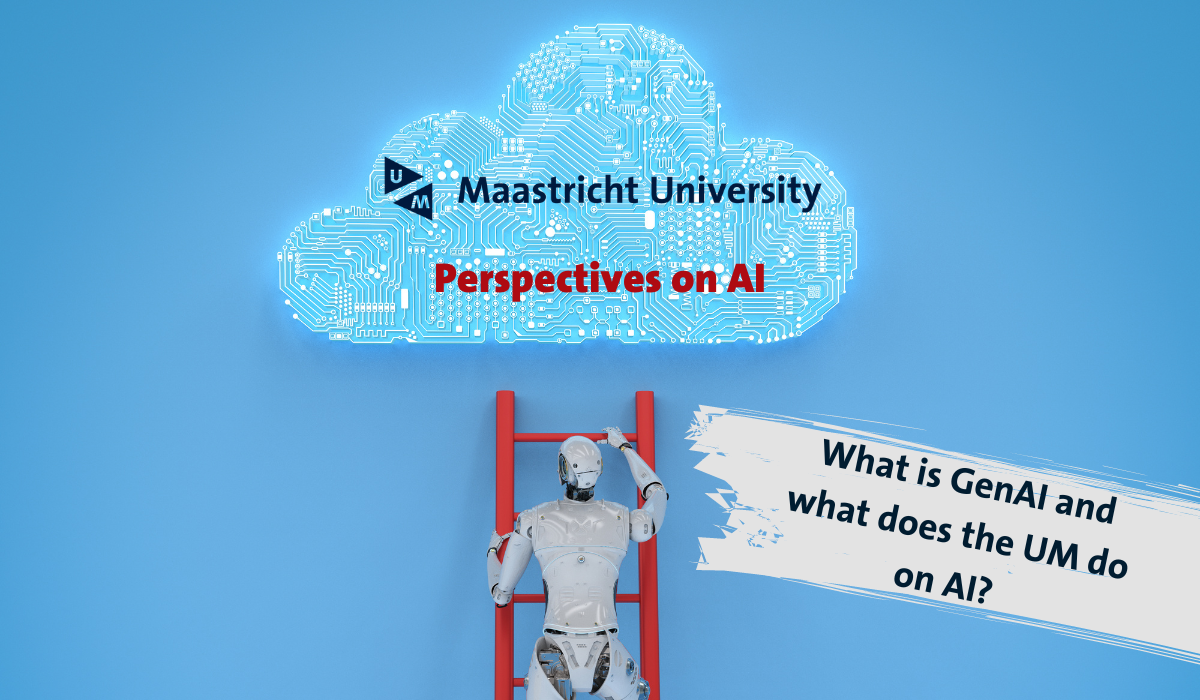This article is inspired by the initiative from Surf, which has called June the month of AI in education.
The library has been teaching information literacy for quite a while now. If you are wondering what information literacy entails, it is “the ability to discover credible sources and critically evaluate information” (UM Library, 2024). Through our trainings on information literacy, we also realised that the majority of students’ work is digital, yet there is not much training for them on how to properly use digital technology. It is often assumed that students are digital natives. Although this term has been debunked many times and is increasing social inequality, it unfortunately remains very persistent (Eynon, 2020). Within the last year, the term digital literacy has been mentioned more frequently, but what exactly is digital literacy and how can it help with AI?
Digital literacy is a term that is attributed to Paul Gilster who published a book called “Digital Literacy” in 1997. At that time already, digital literacy was about ‘ideas, not keystrokes’ (Gilster, 1997, p.1), thus not only focusing on the right buttons to push, but on critically thinking beyond the use of the internet and finding sources. This concept has developed and since then been taken up by other institutions and the European Union has published the Dig Comp framework which focuses on for example digital creation and communication, safety and problem solving.
Inspired by the DigComp and other frameworks, within the library we identified four main focus points for digital literacy for UM students (see picture 1). These look at general aspects needed for academic literacy, such as critical thinking and scientific integrity, but also digital creation and collaboration, and digital learning and development. Lastly, aspects of safety, ranging from cybersecurity and data privacy to digital wellbeing were included.

Picture 1: Focus points UM Library Digital Literacy for students
And now you are probably wondering, what about AI? For that I take the aspects Bali (2024) names as the main aspects of Critical AI literacy and link them to the main focus points of digital literacy at the library (see picture 2).

Picture 2: Dimensions of Critical AI literacy (Bali, 2024) and link with aspects of Digital Literacy
As you can see, all of these aspects are part of the focus points of digital literacy. Important here is that we do not directly jump to the conclusion that we only need to develop AI literacy, but also keep in mind that students in general also need to develop digital literacy skills, as AI technology, although important, is just one of many.
Therefore, the library is currently developing materials for digital literacy, including aspects of AI. For example, we are looking into how GenAI is influencing our current teaching materials for information literacy, when it comes to aspects of plagiarism and disinformation. Additionally, we are developing an online module on the responsible use of GenAI in education. If you want to know more about the module, digital and information literacy, please contact us at Ask Your Librarian!
Author: Anna-Lena Hoh, Information Specialist Digital Literacy
References
Bali, M. (2024). Where are the crescents in AI? https://blogs.lse.ac.uk/highereducation/2024/02/26/where-are-the-crescents-in-ai/
Eynon, R. (2020). The myth of the digital native: Why it persists and the harm it inflicts. In OECD (Ed.), Education in the Digital Age. https://www.oecd-ilibrary.org/sites/1209166a-en/1/3/3/3/index.html?itemId=/content/publication/1209166a-en&_csp_=228b14d29efd07beac99830808e445e5&itemIGO=oecd&itemContentType=book
Gilster, P. (1997). Digital Literacy. Wiley Computer Publishing.
UM Library. (2024). Information Literacy. https://library.maastrichtuniversity.nl/teach/information-literacy/



0 Comments